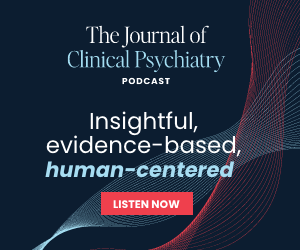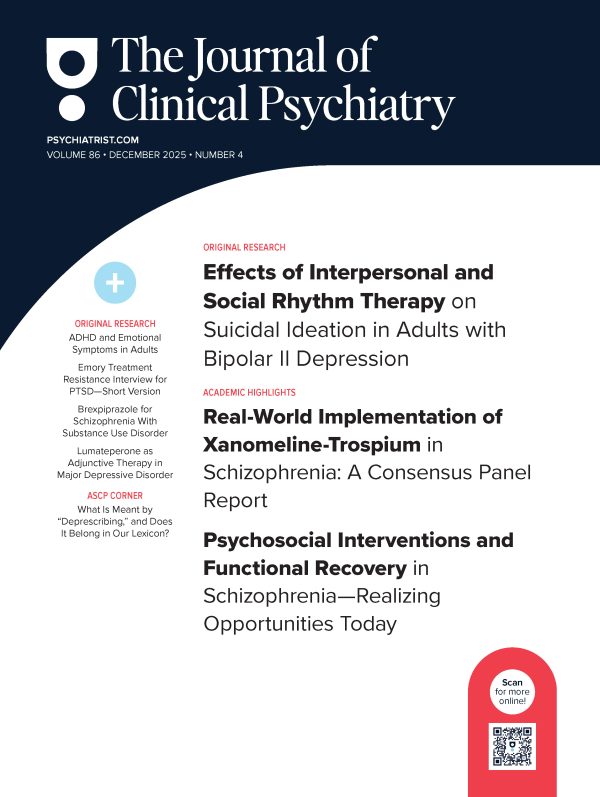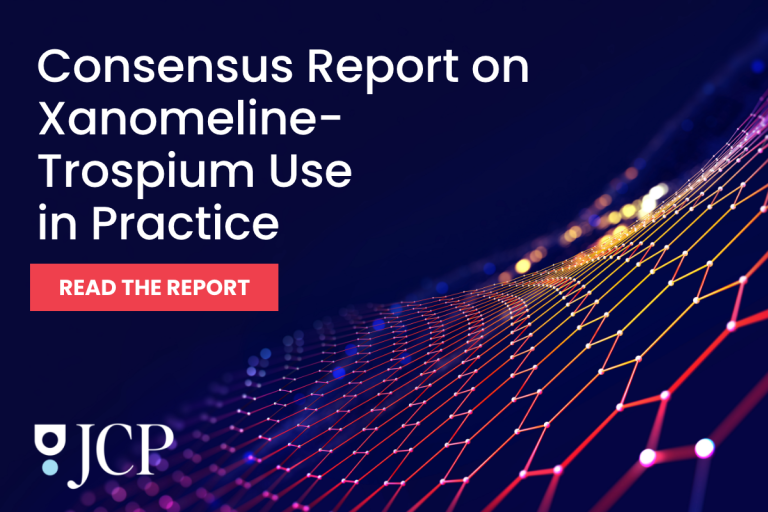Abstract
Background: There is growing evidence that understanding the role of sleep disturbance in bipolar disorder (BD) and major depressive disorder (MDD) is helpful when studying the high heterogeneity of patients across psychiatric disorders.
Objective: The present study was designed to investigate the transdiagnostic role of sleep disturbance measured by polysomnography (PSG) in differentiating from MDD with BD.
Methods: A total of 256 patients with MDD and 107 first-episode and never medicated patients with BD using the Diagnostic and Statistical Manual of Mental Disorders, Fourth Edition, criteria were recruited. All patients completed 1 night of PSG recording, and the changes in objective sleep structure parameters were determined by PSG analysis.
Results: We showed that patients with MDD had statistically longer rapid eye movement (REM) latency, a higher percentage of stage N2 sleep, and lower percentages of stage N3 sleep and REM sleep than those with BD after controlling for confounding factors (all P < .05). Moreover, using the logistic regression analysis, we identified that REM latency was associated with BD diagnosis among the PSG sleep features. The cutoff value for PSG characteristics to differentiate BD from MDD was 261 in REM latency (sensitivity: 41.4% and specificity: 84.1%).
Conclusions: Our findings suggest that PSG-measured sleep abnormalities, such as reduced REM latency, may be a diagnostic differentiating factor between MDD and BD, indicating their roles in identifying homogeneous transdiagnostic subtypes across psychiatric disorders.
J Clin Psychiatry 2024;85(3):23m15210
Author affiliations are listed at the end of this article.
Members Only Content
This full article is available exclusively to Professional tier members. Subscribe now to unlock the HTML version and gain unlimited access to our entire library plus all PDFs. If you’re already a subscriber, please log in below to continue reading.
References (69)

- Vigo D, Thornicroft G, Atun R. Estimating the true global burden of mental illness. Lancet Psychiatry. 2016;3(2):171–178. PubMed CrossRef
- Cieza A, Causey K, Kamenov K, et al. Global estimates of the need for rehabilitation based on the global burden of disease study 2019: a systematic analysis for the Global Burden of Disease Study 2019. Lancet. 2021;396(10267):2006–2017. PubMed CrossRef
- Kessler RC, Berglund P, Demler O, et al. Lifetime prevalence and age-of-onset distributions of DSM-IV disorders in the National Comorbidity Survey Replication. Arch Gen Psychiatry. 2005;62(6):593–602. PubMed CrossRef
- Hall RC, Wise MG. The clinical and financial burden of mood disorders. Cost and outcome. Psychosomatics. 1995;36(2):S11–S18. PubMed CrossRef
- Drancourt N, Etain B, Lajnef M, et al. Duration of untreated bipolar disorder: missed opportunities on the long road to optimal treatment. Acta Psychiatr Scand. 2013;127(2):136–144. PubMed CrossRef
- Kanba S, Kato T, Terao T, et al. Guideline for treatment of bipolar disorder by the Japanese Society of Mood Disorders, 2012. Psychiatry Clin Neurosci. 2013;67(5):285–300. PubMed CrossRef
- Schubert CR, Cruickshanks KJ, Dalton DS, et al. Prevalence of sleep problems and quality of life in an older population. Sleep. 2002;25(8):889–893. PubMed
- Fricke-Oerkermann L, Plück J, Schredl M, et al. Prevalence and course of sleep problems in childhood. Sleep. 2007;30(10):1371–1377. PubMed CrossRef
- Spruyt K, O’Brien LM, Cluydts R, et al. Odds, prevalence and predictors of sleep problems in school-age normal children. J Sleep Res. 2005;14(2):163–176. PubMed CrossRef
- Gao Z, Xiao Y, Zhang Y, et al. Comparisons of resting-state brain activity between insomnia and schizophrenia: a coordinate-based meta-analysis. Schizophrenia (Heidelb). 2022;8(1):80. PubMed
- Murphy MJ, Peterson MJ. Sleep disturbances in depression. Sleep Med Clin. 2015;10(1):17–23. PubMed
- Motivala SJ, Sarfatti A, Olmos L, et al. Inflammatory markers and sleep disturbance in major depression. Psychosom Med. 2005;67(2):187–194. PubMed CrossRef
- Mendlewicz J. Sleep disturbances: core symptoms of major depressive disorder rather than associated or comorbid disorders. World J Biol Psychiatry. 2009;10(4):269–275. PubMed CrossRef
- Hamilton M. Frequency of symptoms in melancholia (depressive illness). Br J Psychiatry. 1989;154:201–206. PubMed CrossRef
- Breslau N, Roth T, Rosenthal L, et al. Sleep disturbance and psychiatric disorders: a longitudinal epidemiological study of young adults. Biol Psychiatry. 1996;39(6):411–418. PubMed CrossRef
- Harvey AG, Soehner AM, Kaplan KA, et al. Treating insomnia improves mood state, sleep, and functioning in bipolar disorder: a pilot randomized controlled trial. J Consult Clin Psychol. 2015;83(3):564–577. PubMed CrossRef
- Geoffroy PA, Scott J, Boudebesse C, et al. Sleep in patients with remitted bipolar disorders: a meta-analysis of actigraphy studies. Acta Psychiatr Scand. 2015;131(2):89–99. PubMed CrossRef
- Ng TH, Chung KF, Ho FYY, et al. Sleep-wake disturbance in interepisode bipolar disorder and high-risk individuals: a systematic review and meta-analysis. Sleep Med Rev. 2015;20:46–58. PubMed CrossRef
- Wüthrich F, Nabb CB, Mittal VA, et al. Actigraphically measured psychomotor slowing in depression: systematic review and meta-analysis. Psychol Med. 2022;52(7):1208–1221. PubMed
- Robillard R, Naismith SL, Hickie IB. Recent advances in sleep-wake cycle and biological rhythms in bipolar disorder. Curr Psychiatry Rep. 2013;15(10):402. PubMed CrossRef
- Kaplan KA, McGlinchey EL, Soehner A, et al. Hypersomnia subtypes, sleep and relapse in bipolar disorder. Psychol Med. 2015;45(8):1751–1763. PubMed CrossRef
- Zhao W, Van Someren EJW, Li C, et al. EEG spectral analysis in insomnia disorder: a systematic review and meta-analysis. Sleep Med Rev. 2021;59:101457. PubMed CrossRef
- Geoffroy PA, Tebeka S, Blanco C, et al. Shorter and longer durations of sleep are associated with an increased twelve-month prevalence of psychiatric and substance use disorders: findings from a nationally representative survey of US adults (NESARC-III). J Psychiatr Res. 2020;124:34–41. PubMed CrossRef
- Krysta K, Krzystanek M, Bratek A, et al. Sleep and inflammatory markers in different psychiatric disorders. J Neural Transm (Vienna). 2017;124(suppl 1):179–186. PubMed CrossRef
- Dolsen EA, Asarnow LD, Harvey AG. Insomnia as a transdiagnostic process in psychiatric disorders. Curr Psychiatry Rep. 2014;16(9):471. PubMed CrossRef
- Laskemoen JF, Simonsen C, Büchmann C, et al. Sleep disturbances in schizophrenia spectrum and bipolar disorders–a transdiagnostic perspective. Compr Psychiatry. 2019;91:6–12. PubMed CrossRef
- Lai YC, Huang MC, Chen HC, et al. Familiality and clinical outcomes of sleep disturbances in major depressive and bipolar disorders. J Psychosom Res. 2014;76(1):61–67. PubMed CrossRef
- Stubbs B, Vancampfort D, Veronese N, et al. The prevalence and predictors of obstructive sleep apnea in major depressive disorder, bipolar disorder and schizophrenia: a systematic review and meta-analysis. J Affect Disord. 2016;197:259–267. PubMed CrossRef
- Chung JK, Lee KY, Kim SH, et al. Circadian rhythm characteristics in mood disorders: comparison among bipolar I disorder, bipolar II disorder and recurrent major depressive disorder. Clin Psychopharmacol Neurosci. 2012;10(2):110–116. PubMed CrossRef
- Sharma V, Mazmanian D. Sleep loss and postpartum psychosis. Bipolar Disord. 2003;5(2):98–105. PubMed CrossRef
- Harvey AG, Murray G, Chandler RA, et al. Sleep disturbance as transdiagnostic: consideration of neurobiological mechanisms. Clin Psychol Rev. 2011;31(2):225–235. PubMed CrossRef
- Wulff K, Gatti S, Wettstein JG, et al. Sleep and circadian rhythm disruption in psychiatric and neurodegenerative disease. Nat Rev Neurosci. 2010;11(8):589–599. PubMed CrossRef
- Galbiati A, Sforza M, Fasiello E, et al. Impact of phenotypic heterogeneity of insomnia on the patients’ response to cognitive-behavioral therapy for insomnia: current perspectives. Nat Sci Sleep. 2019;11:367–376. PubMed CrossRef
- O’Connell KS, Frei O, Bahrami S, et al. Characterizing the genetic overlap between psychiatric disorders and sleep-related phenotypes. Biol Psychiatry. 2021;90(9):621–631. PubMed
- Meyer N, Faulkner SM, McCutcheon RA, et al. Sleep and circadian rhythm disturbance in remitted schizophrenia and bipolar disorder: a systematic review and meta-analysis. Schizophr Bull. 2020;46(5):1126–1143. PubMed CrossRef
- Carley DW, Farabi SS. Physiology of sleep. Diabetes Spectr. 2016;29(1):5–9. PubMed CrossRef
- Memar P, Faradji F. A novel multi-class EEG-based sleep stage classification system. IEEE Trans Neural Syst Rehabil Eng. 2018;26(1):84–95. PubMed
- Patel AK, Reddy V, Araujo JF. Physiology, sleep stages. StatPearls [Internet]. StatPearls Publishing; 2022.
- Şenel GB, Aydın Ö, Aydın ET, et al. Changes in sleep structure and sleep spindles are associated with the neuropsychiatric profile in paradoxical insomnia. Int J Psychophysiol. 2021;168:27–32. PubMed
- Chen X, Liu H, Wu Y, et al. Characteristics of sleep architecture in autism spectrum disorders: a meta-analysis based on polysomnographic research. Psychiatry Res. 2021;296:113677. PubMed CrossRef
- Parrino L, Ferrillo F, Smerieri A, et al. Is insomnia a neurophysiological disorder? The role of sleep EEG microstructure. Brain Res Bull. 2004;63(5):377–383. PubMed CrossRef
- Chen R, Xiong KP, Lian YX, et al. Daytime sleepiness and its determining factors in Chinese obstructive sleep apnea patients. Sleep Breath. 2011;15(1):129–135. PubMed CrossRef
- Iber C, Ancoli-Israel S, Chesson AL. The AASM Manual for the Scoring of Sleep and Associated Events: rules, terminology and technical specifications. American Academy of Sleep Medicine; 2007.
- Berry RB, Quan SF, Abreu AR, et al. The AASM Manual for the Scoring of Sleep and Associated Events: rules, terminology and technical specifications. American Academy of Sleep Medicine; 2020.
- Bishir M, Bhat A, Essa MM, et al. Sleep deprivation and neurological disorders. Biomed Res Int. 2020;2020:5764017. PubMed CrossRef
- Baglioni C, Nanovska S, Regen W, et al. Sleep and mental disorders: a meta analysis of polysomnographic research. Psychol Bull. 2016;142(9):969–990. PubMed CrossRef
- Chauhan AK, Mallick BN. Association between autophagy and rapid eye movement sleep loss-associated neurodegenerative and patho-physio-behavioral changes. Sleep Med. 2019;63:29–37. PubMed CrossRef
- Pesonen AK, Gradisar M, Kuula L, et al. REM sleep fragmentation associated with depressive symptoms and genetic risk for depression in a community-based sample of adolescents. J Affect Disord. 2019;245:757–763. PubMed CrossRef
- Stubbs B, Vancampfort D, Veronese N, et al. The prevalence and predictors of obstructive sleep apnea in major depressive disorder, bipolar disorder and schizophrenia: a systematic review and meta-analysis. J Affect Disord. 2016;197:259–267. PubMed CrossRef
- Riemann D, Krone LB, Wulff K, et al. Sleep, insomnia, and depression. Neuropsychopharmacology. 2020;45(1):74–89. PubMed CrossRef
- Dondé C, Jaffiol A, Khouri C, et al. Sleep disturbances in early clinical stages of psychotic and bipolar disorders: a meta-analysis. Aust N Z J Psychiatry. 2022;56(9):1068–1079. PubMed
- Nutt D, Wilson S, Paterson L. Sleep disorders as core symptoms of depression. Dialogues Clin Neurosci. 2008;10(3):329–336. PubMed CrossRef
- Alvaro PK, Roberts RM, Harris JK. A systematic review assessing bidirectionality between sleep disturbances, anxiety, and depression. Sleep. 2013;36(7):1059–1068. PubMed CrossRef
- Tsuno N, Besset A, Ritchie K. Sleep and depression. J Clin Psychiatry. 2005;66(10):1254–1269. PubMed CrossRef
- Roloff T, Haussleiter I, Meister K, et al. Sleep disturbances in the context of neurohormonal dysregulation in patients with bipolar disorder. Int J Bipolar Disord. 2022;10(1):6. PubMed
- Jackson A, Cavanagh J, Scott J. A systematic review of manic and depressive prodromes. J Affect Disord. 2003;74(3):209–217. PubMed CrossRef
- Sierra P, Livianos L, Arques S, et al. Prodromal symptoms to relapse in bipolar disorder. Aust N Z J Psychiatry. 2007;41(5):385–391. PubMed CrossRef
- Haraden DA, Mullin BC, Hankin BL. The relationship between depression and chronotype: a longitudinal assessment during childhood and adolescence. Depress Anxiety. 2017;34(10):967–976. PubMed CrossRef
- Bahk YC, Han E, Lee SH. Biological rhythm differences and suicidal ideation in patients with major depressive disorder. J Affect Disord. 2014;168:294–297. PubMed CrossRef
- Zhang Y, Ren R, Yang L, et al. Patterns of polysomnography parameters in 27 neuropsychiatric diseases: an umbrella review. Psychol Med. 2023;53(10):4675–4695. PubMed CrossRef
- Lim DC, Mazzotti DR, Sutherland K, et al. Reinventing polysomnography in the age of precision medicine. Sleep Med Rev. 2020;52:101313. PubMed CrossRef
- Benca RM, Obermeyer WH, Thisted RA, et al. Sleep and psychiatric disorders. A meta-analysis. Arch Gen Psychiatry. 1992;49(8):651–668. PubMed CrossRef
- Tran TTT, Nguyen NB, Luong MA, et al. Stress, anxiety and depression in clinical nurses in Vietnam: a cross-sectional survey and cluster analysis. Int J Ment Health Syst. 2019;13:3. PubMed CrossRef
- Galbiati A, Verga L, Giora E, et al. The risk of neurodegeneration in REM sleep behavior disorder: a systematic review and meta-analysis of longitudinal studies. Sleep Med Rev. 2019;43:37–46. PubMed CrossRef
- Hertenstein E, Feige B, Gmeiner T, et al. Insomnia as a predictor of mental disorders: a systematic review and meta-analysis. Sleep Med Rev. 2019;43:96–105. PubMed CrossRef
- Shi L, Chen SJ, Ma MY, et al. Sleep disturbances increase the risk of dementia: a systematic review and meta-analysis. Sleep Med Rev. 2018;40:4–16. PubMed
- Gold AK, Sylvia LG. The role of sleep in bipolar disorder. Nat Sci Sleep. 2016;8:207–214. PubMed CrossRef
- Habukawa M, Uchimura N, Maeda M, et al. Differences in rapid eye movement (REM) sleep abnormalities between posttraumatic stress disorder (PTSD) and major depressive disorder patients: REM interruption correlated with nightmare complaints in PTSD. Sleep Med. 2018;43:34–39. PubMed CrossRef
- Riemann D, Berger M, Voderholzer U. Sleep and depression—results from psychobiological studies: an overview. Biol Psychol. 2001;57(1–3):67–103. PubMed CrossRef





